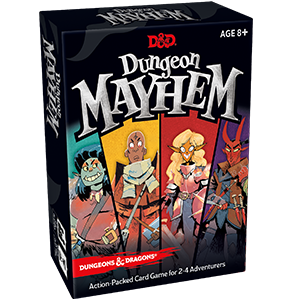A quick archetype of Dungeons and Dragons leonin dnd name generator was a bunch of middle-age smaller-than-expected principles composed by Jeff Perren. These were developed by Gary Gygax (whose increments incorporated a dream supplement) before the game was distributed as Chainmail. At the point when Dave Wesely entered the help in 1970, his companion and individual Napoleonics wargamer Dave Arneson started a middle-age variety of Wesely’s Braunstein games, where players control people rather than armed forces. Arneson utilized Chainmail to determine battles. As play advanced, Arneson added such developments as character classes, the experience focuses, level progression, reinforcement classes, and others. Having joined forces beforehand with Gygax on Don’t Give Up the Ship!, Arneson acquainted Gygax with his Blackmoor game and the two then, at that point, worked together on creating “The Fantasy Game”, the pretending game (RPG) that became Dungeons and Dragons, with the last composition and arrangement of the text being finished by Gygax.
Numerous Dungeons and Dragons components are also found in leisure activities from the mid-to-late 20th century (although these elements already existed). Character-based pretending, for instance, can be seen in recorded reenactment and improvisational theater. Game-world recreations were all around created in wargaming. Dream milieus explicitly intended for gaming could be found in Glorantha’s prepackaged games, among others. Eventually, notwithstanding, Dungeons and Dragons addresses a one-of-a-kind mixing of these components.
Subject and anecdotal components
The topic of D&D was affected by folklore, raw fiction, and contemporary dream creators of the 1960s and 1970s. The presence of halflings, mythical beings, dwarves, half-mythical beings, orcs, officers, and such regularly attracts correlations crafted by J. R. R. Tolkien. Gygax said he was not majorly influenced by The Lord of the Rings, and that it was all commercially driven to make the film popular. Nonetheless, in a meeting in 2000, he recognized that Tolkien had a “solid effect”.
Classes
Professional killer
The professional killer showed up as a base class in Supplement II: Blackmoor for OD&D, in first edition AD&D, and as a distinct class in the Third Edition. In general, they were based on generalizations of certified professional killers and on the Islamic professional killers who began during the Crusades.
Brute
The brute authoritatively showed up as a class first in Dragon and afterwards in AD&D’s Unearthed Arcana. Conan the Barbarian by Howard, of whom Gygax declared to be a fan since 1950, was the primary influence on the class.
As Conan was frequently profoundly dubious of wizardry, this savage was restricted in its capacity to utilize supernatural things until more significant levels. This class was an incredible leader and a capable climber, like Conan. The D&D 3.5 adaptation held a few likenesses, yet dispensed with the hatred for enchantment. A less insane form of a berserker’s fierceness was fused as the fury capacity (already, berserkers had been NPCs or beasts) for savages. The 3.5 brutes stayed near its model originator, notwithstanding, having a snare sense and uncanny evade capacities like Conan’s sharp eye for the inconvenience. In the fourth release, the savages’ fury capacities are otherworldly; the brute permitting oneself to be moved by Primal (nature) spirits which give heavenly fury.
Contender
The contender (or battling man as he was initially called) is an exceptionally nonexclusive classification of verifiable, fanciful, and fantastical fighters, hired soldiers, knights, and outlaws.
Priest

The priest depends on the Asian hand-to-hand fighting practice. A considerable lot of their capacities are those credited to Sifus and Zen Ace.






